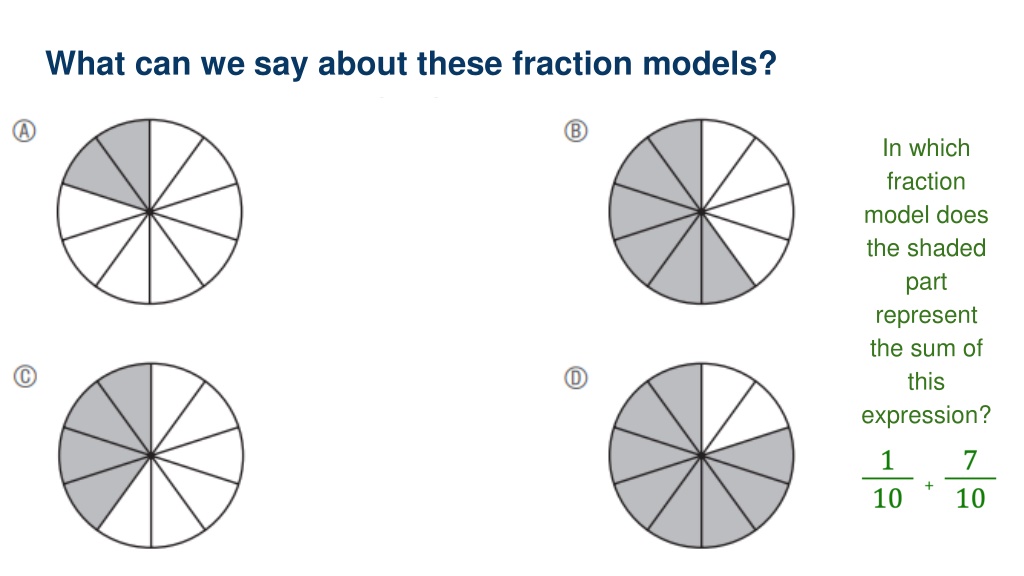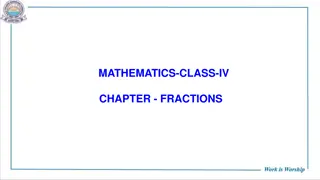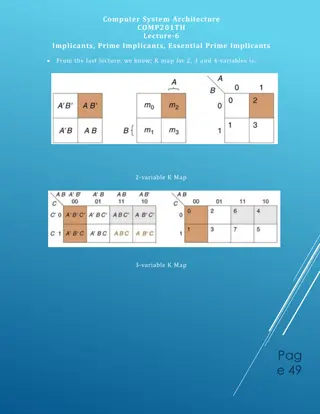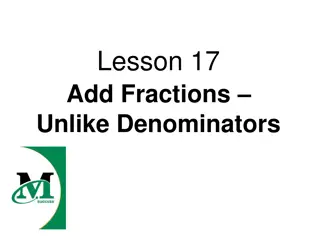Math Concepts Overview: Fractions, Age Differences, Prime Numbers, Area & Geometry
Explore various math concepts including fraction models, age differences, prime numbers, area calculations, symmetry in shapes, line plots, and number patterns in this collection of educational images and questions.
Download Presentation

Please find below an Image/Link to download the presentation.
The content on the website is provided AS IS for your information and personal use only. It may not be sold, licensed, or shared on other websites without obtaining consent from the author. Download presentation by click this link. If you encounter any issues during the download, it is possible that the publisher has removed the file from their server.
E N D
Presentation Transcript
What can we say about these fraction models? In which fraction model does the shaded part represent the sum of this expression?
Takaras brother is 2 times as old as Takara. What can we say? Takara is 4 years old. Which equation can be used to find b, the age in years of Takara s brother?
The shaded portion of this model represents a fraction less than 1. What can we say about the fraction? What if we think about decimals? Which of these decimals are equivalent to the fraction represented in the model? Select the two correct answers. A 0.80 B 8.0 C 0.08 D 80.0 E 0.8
What is the total weight, in pounds, of the 5 sticks of butter?
27 43 52 67 95 What can we say about these numbers? Which of these numbers are PRIME numbers?
What can we say about these measurements (think about area and perimeter)? A sign is in the shape of a square. Each side of the sign has a length of 6 inches. What is the area of the sign? A. 12 square inches B. 24 square inches C. 36 square inches D. 148 square inches
How are these shapes the same? How are they different? Which of these shapes have at least one line of symmetry? Select the three correct answers.
This list shows the snowfall amounts, in inches, for eight towns during a storm. Which of these line plots shows all eight snowfall amounts correctly plotted? This line plot also shows some of the snowfall amounts. One of the snowfall amounts is missing from the line plot. Can we figure out which one is missing?
The rule for a pattern is multiply by 3. The first number in the pattern is 2. What can we say about this pattern? What is the FIFTH number in this pattern?
What do we know about What value of x makes this equation true?
What do we notice? What do we wonder? Which of these triangles have at least one obtuse angle? Select the two correct answers.
Alonzo and Mindy are buying pretzels to share with their class. They will put all the pretzels into bags. Alonzo buys 8 pretzels. Mindy buys 3 times as many pretzels as Alonzo. Each bag will hold up to 5 pretzels. Alonzo and Mindy want to know the least number of bags they need to hold all the pretzels. Which of these statements are true? Select the two correct answers. A. B. C. D. E. Alonzo and Mindy have a total of 24 pretzels. Alonzo and Mindy have a total of 32 pretzels. Alonzo and Mindy need 5 bags to hold all the pretzels. Alonzo and Mindy need 6 bags to hold all the pretzels. Alonzo and Mindy need 7 bags to hold all the pretzels.
What do we know about the fraction A shopper bought What is the decimal equivalent? pound of peppers
Which of these number lines shows a point that represents where 0.62 is located? Mrs. M. bought 0.62 pound of grapes. Sketch where 0.62 lives on a number line?
A model of 1 whole is shown. What can we say about these other models?
Select the two correct answers. Can you think of a number that rounds to 30,000 when rounding to the nearest ten thousand? A. 34,124 B. 35,021 Which of these numbers round to 30,000 when rounding to the nearest ten thousand? C. 37,826 D. 32,788 E. 36,249
Angle QRT has a measure of 87. What is the measure of angle SRT? A. 23 B. 26 C. 64 Angle QRS has a measure of 64 , as shown in this diagram. D. 151 What do we notice?























